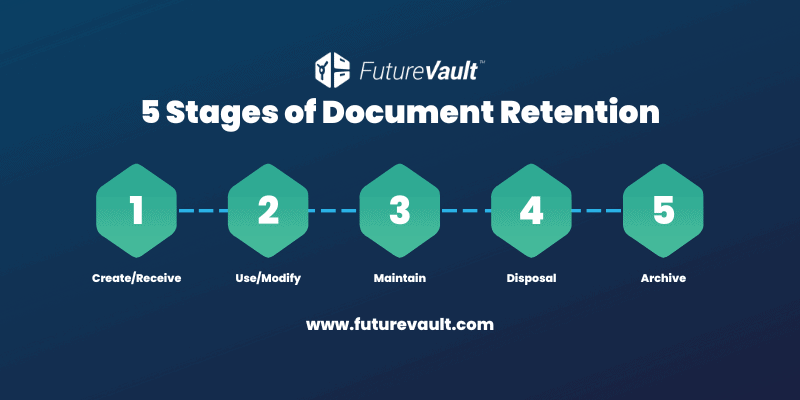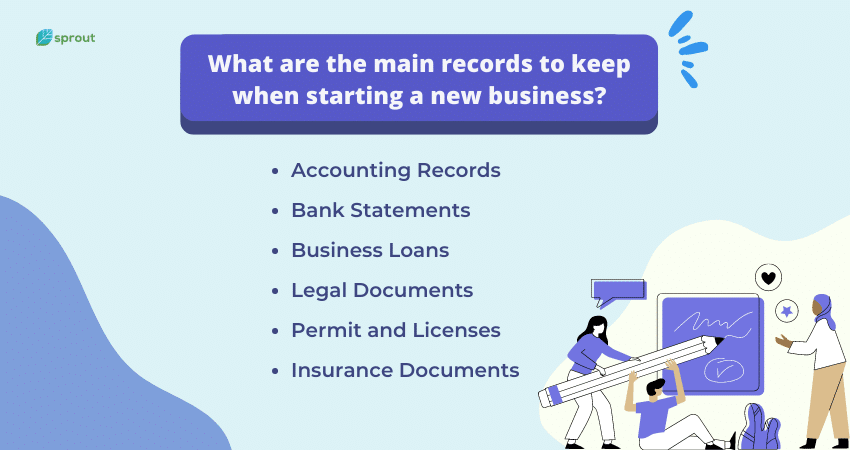How to Create a Workable Document Retention Policy

While tortoises have a reputation for longevity, the bowhead whale can live nearly twice as long: 200 years or more. Not to be outdone, the ocean quahog, a type of clam, is said to live over 500 years. On the other end of the spectrum, mayflies have an average lifespan of about 24 hours. One common complaint about life is that it doesn’t last long enough, but a workable document retention policy ensures that your documents have just the right lifespan.
Unlike ocean quahogs and mayflies, a document’s lifespan is determined entirely by human users and the policies they create.
A document retention policy creates standards for how users in your organization record and retain information. Based on your industry, location, and size, your document retention policy will be determined by a combination of laws and best practices. However, this guide will make creating a workable document retention policy as stress-free as possible.
Key Takeaways:
- A document retention policy keeps you efficient, productive, and compliant.
- To create a document retention policy, first identify your records and business needs.
- FileCenter has advanced document management tools that can help you implement a robust document retention policy.
Why You Need a Document Retention Policy
Do I need to archive or destroy this document?
What format should I save this data in?
What happens if I don’t retain a document?
You need a document retention policy to answer these questions. A document retention policy creates standards for how your organization records, maintains, reports, retains, and disposes of documents. There are several reasons you need a document retention policy:
- Legal compliance. Many laws require organizations to retain documents for specified periods of time. For example, the IRS requires businesses to keep financial documents for a minimum of 3 years, or longer if you meet certain criteria. The Sarbanes Oxley Act of 2002 requires companies to retain financial reports and the documents that back them up for a minimum of 7 years. FINRA requires a 6-year retention period for certain records.
- Ease of use. Have you ever wondered how much time people have spent looking for things that don’t exist? From bigfoot to deleted documents, not all searches are equally productive. A data retention policy helps users know if a document exists before they waste time looking for it.
- Storage. Document retention policies do what their name suggests: creates a policy for when to retain documents. Just as importantly, though, this policy makes rules for when not to retain records. This prevents storage waste, as businesses can accumulate millions of unnecessary documents over the years. A document retention policy creates rules for eliminating this unnecessary waste by disposing of documents.
Stages of Document Retention
Document management doesn’t just deal with document deletion: your document retention policy governs the entire lifecycle of your documents, from creation to disposal.
- Create/receive. A standard four-drawer filing cabinet holds around 20,000 sheets of paper. A single gig of digital storage can hold over 33 times as many pages of text as a four-drawer filing cabinet. A document retention policy establishes guidelines for how your organization stores documents, including the formats and locations in which you store them.
- Use/modify. Documents aren’t useful until somebody uses them. The use/modify stage of document retention is the “bread and butter” of day-to-day document storage, but a retention policy is important because it establishes rules for how and when users can make changes to documents.
- Maintain. Concerns like light, humidity, and temperature are mostly irrelevant to modern businesses that store their documents digitally. Today, document maintenance has mostly gone digital and has more to do with retaining, sorting, and backing up important data.
- Disposal. The central question your document retention policy should answer is: when can I dispose of documents? There’s no one answer for how long you should retain documents. Not only does your industry and geographical location play a significant role in what types of documents you should record and retain, but you may need to retain different types of documents for different periods of time.
- Archive. Document archival is long-term storage. Archived documents aren’t available for regular use, but they aren’t ready for deletion either. In physical document systems, you archive documents by moving them out of filing cabinets and into a secure a safe separate location. For digital documents, a digital document archive is more secure and cost-effective than physical archiving.

Writing Your Document Retention Policy
Now that you understand the purpose of a document retention policy, it’s time to put pen to paper and write the policy itself. There are 5 key steps to writing a document retention policy:
1. Identify Types of Records
In a popular TikTok trend, a filter picks random movies one at a time and creators attempt to rank them from best to worst without knowing which movies the filter will pick next. While it’s entertaining, it isn’t efficient to organize information without knowing what you’re organizing. The first step to creating a written document retention policy is to identify the types of records your organization uses.
In this step, you should identify not only the documents you retain but also their formats and sources.

2. Identify Business Needs
Different types of documents have different retention needs. For example, you should store tax documents differently than health records. Identify the types of regulations that apply to your business, such as HIPAA, PCI DSS, SOX, HMDA, and FINRA.
You also need to identify the business practices that apply to your document use. For example, documents that aren’t actively used by any department are good candidates for archival.
3. Address Creation, Distribution, Storage, Retrieval, and Disposal.
Your document retention policy should give explicit instructions for how users should add, organize, store, and access documents. This is important for two reasons:
- To give clarity to users who may have questions about when to retain or dispose of documents.
- To document your policies in case of a lawsuit or investigation.
This ensures that your users follow the right policies from the start.
4. Implementation
Once you’ve written your document retention policy, you need to distribute and enforce your policy. Your policy needs to be clear so users can follow it correctly and consistently—protecting your organization from confusion and liability.
Document Management with FileCenter
In recent years, document management has grown more complicated with growing legislation and an explosion of file formats. Thankfully, it’s also gotten simpler as tools like FileCenter can make document management more consistent and reliable than ever.
It’s important to create a workable document retention policy, but it’s equally important that you use the right tools to implement that policy. FileCenter can help you store, sort, access, and dispose of documents with advanced tools like optical character recognition and automatic routing.Ready to create a workable document retention policy? Explore FileCenter’s intuitive and powerful software today.


